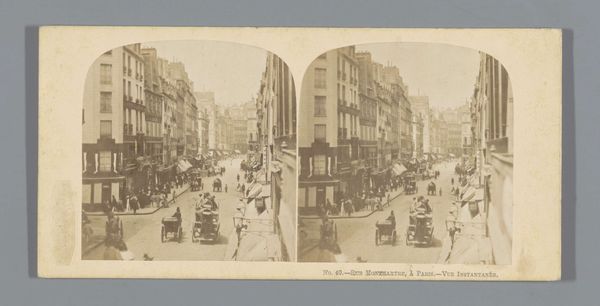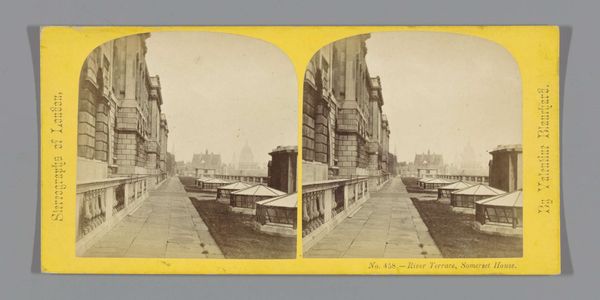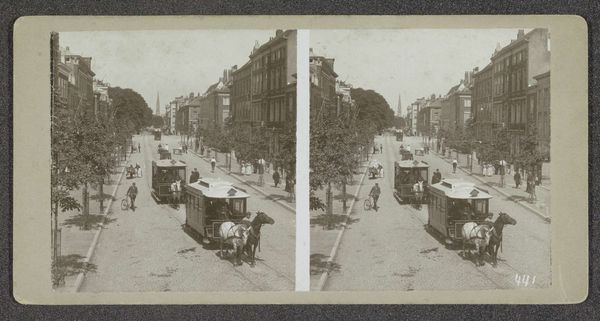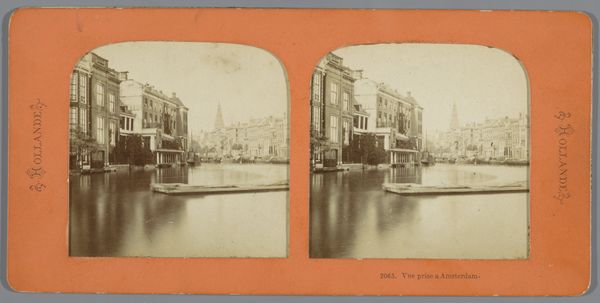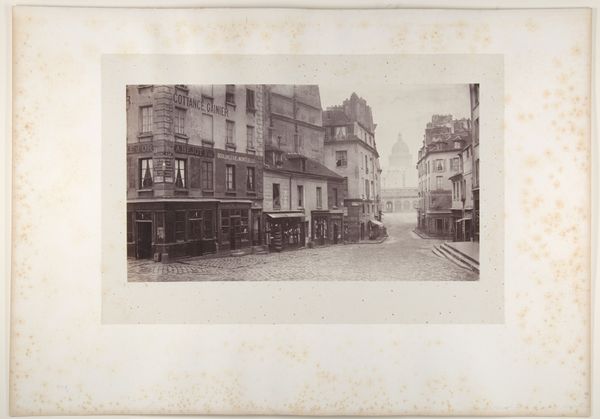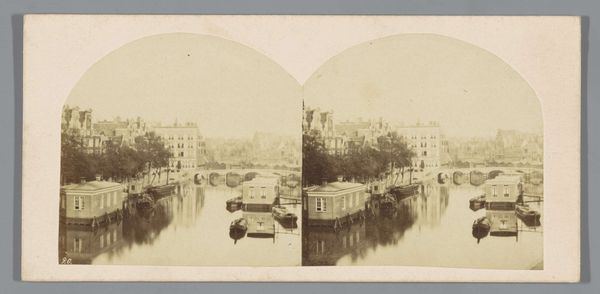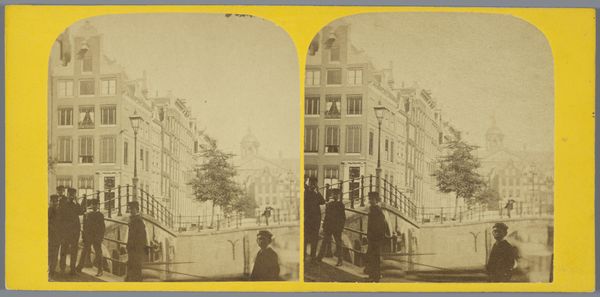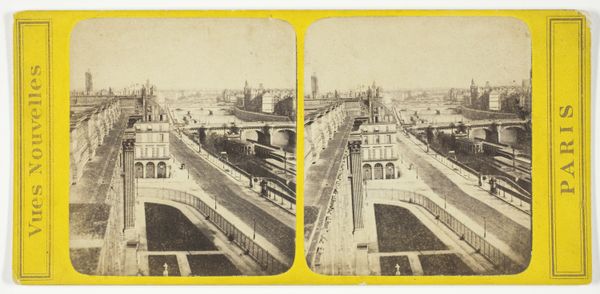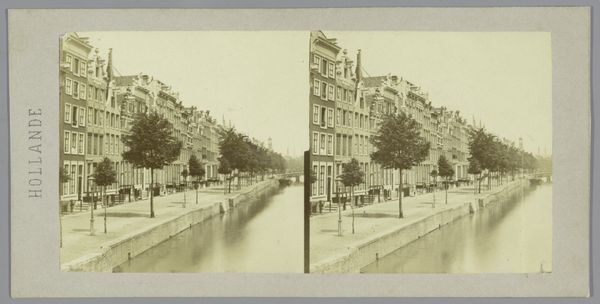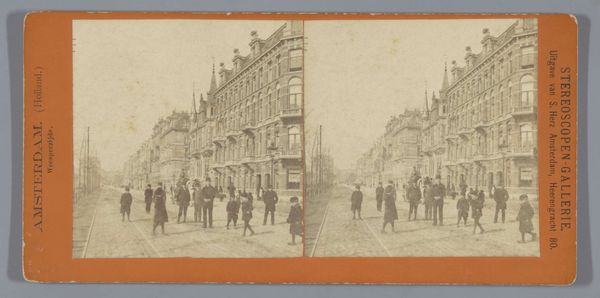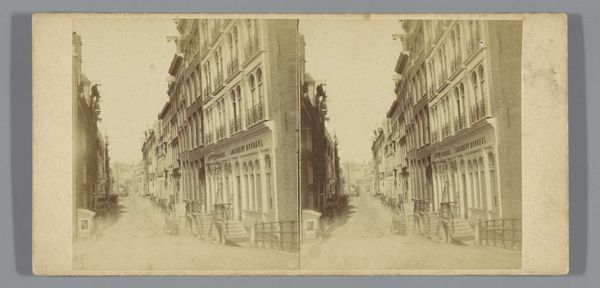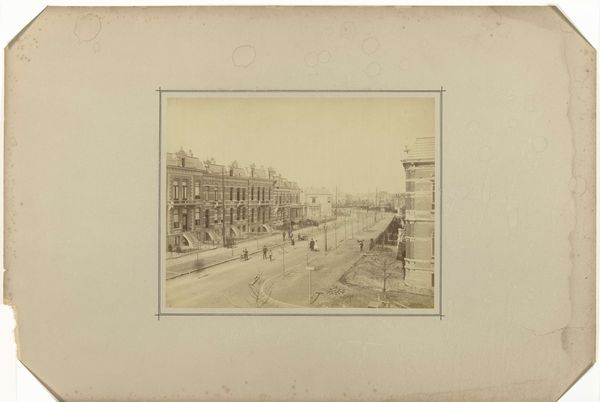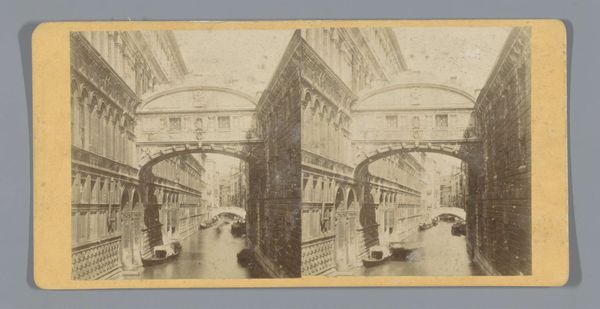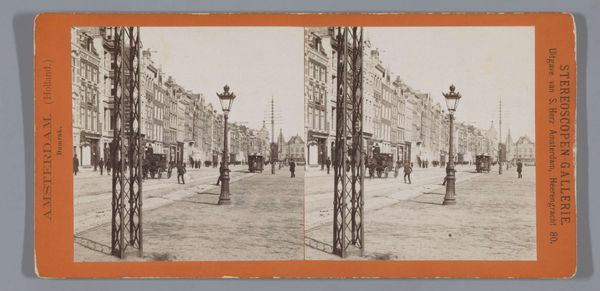
Dimensions: height 87 mm, width 178 mm
Copyright: Rijks Museum: Open Domain
Curator: This is an intriguing view, isn’t it? What strikes you first? Editor: The stillness, definitely the stillness. Like a dream held in sepia tones. It's romantic, almost… melancholy? But something seems… off. Curator: "Gezicht op een gracht in Amsterdam"—or "View of a canal in Amsterdam"—likely created between 1860 and 1875 by Jules Hippolyte Quével. It’s a daguerreotype. That silvery sheen is characteristic of the process, of course. Editor: Ah, a daguerreotype. Knowing that puts a different lens on it. This wasn't a snapshot. Each one of these would have been hand-crafted— from the making of the plate itself, which involved so many trades and labor... to the actual exposure! Did they plan the boats position as well? Fascinating! The very fact that this slice of Amsterdam has been captured and turned into what some consider a jewel-like commodity really changes its cultural implications. Curator: The "hand-crafted" element is key, I agree. Quével, and other photographers from this period, embraced photography, using processes rooted in chemistry and optics to produce work reminiscent of painting. It becomes a blurring of the boundaries. Editor: Yes, it’s interesting because now it appears "everyday". The angle he selects seems "unplanned," but the chemical process by which the buildings, barges and brick all exist… The canal-side labour here must have been crucial for the city, the quay like a logistical vein pumping life into its arteries. Curator: Precisely. It's a work deeply rooted in the social and economic context of 19th-century Amsterdam. How might the materials available influenced Quével choices, what dictated his use of daguerreotype, for example. Editor: We are now overwhelmed with imagery—but in those times the printing process of street scenes such as this might only reach few. In some ways photography can only reflect society from where it comes—what does photography and photographic practice have in the future? Curator: It's like the ghost of Amsterdam whispers through the silver, each tiny ripple in the canal reflecting an unrepeatable, unknowable past—or, perhaps more optimistically, is our job for an unknowable future.
Comments
No comments
Be the first to comment and join the conversation on the ultimate creative platform.
